Deleted
Deleted Member
Posts: 0
|
Post by Deleted on Jun 19, 2018 7:16:25 GMT -5
I,ve wondered about about big taproots on radishes, I,ve heard that they allow land to better drain in clay soil, but I wonder (probable) if that also speeds up nitrogens ability to leech past the root zone. I guess maybe a trade of some sorts, seeing how some of clays retention ability is useful, and in some ways it's not. I guess with beans you don't have to worry about leaching. * I guess I maybe referencing a post on page 2 and didn't realize where in terms of pages I was, better late than never...
|
|
|
|
Post by oldmobie on Jun 19, 2018 17:43:49 GMT -5
I,ve wondered about about big taproots on radishes, I,ve heard that they allow land to better drain in clay soil, but I wonder (probable) if that also speeds up nitrogens ability to leech past the root zone. I guess maybe a trade of some sorts, seeing how some of clays retention ability is useful, and in some ways it's not. I guess with beans you don't have to worry about leaching. * I guess I maybe referencing a post on page 2 and didn't realize where in terms of pages I was, better late than never... I've tried to use radishes and carrots to decompact my soil. I didn't really have much success. Others seem to succeed, so don't be discouraged by my results. For me, larger varieties either end up stunted, or grow with about the same amount of root below ground, but extend up several inches, with the leaves starting higher from the ground. I've been having great success this year with my broadfork I got for Christmas. Immediately after use, the bed where I used it will be about 2"-3" higher than the surrounding soil. I never realized it was THAT compacted. I suppose it will recompact over time. I really should start spreading organic matter (like manure, straw, leaves, grass clippings) before broadforking. Whatever works it's way below the surface should help delay recompaction. 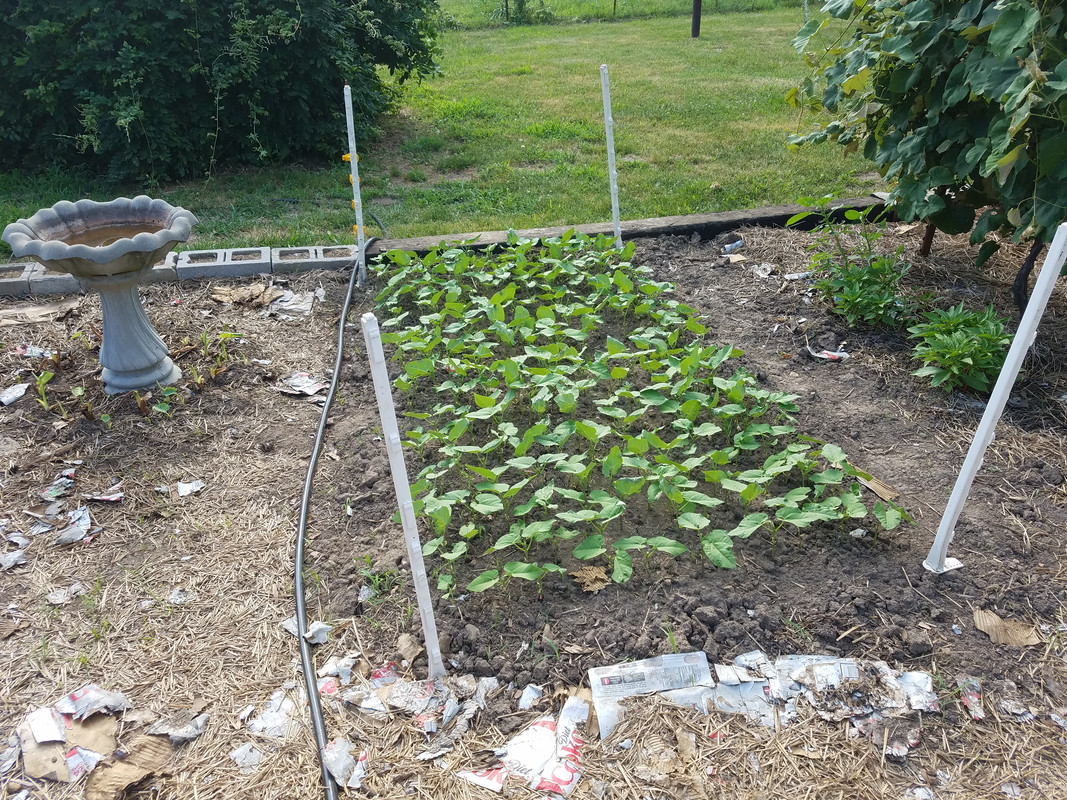 Notice the slope down on the left side, just before the mulch starts? That was level before broadforking. On the right, that walkway was broadforked, but walking on it is starting to recompact it. Same in the picture below: the path was broadforked, but we walk on it. In the foreground, I didn't broadfork, because that's an area where we buried sticks last season for some hugelculture style decompaction. 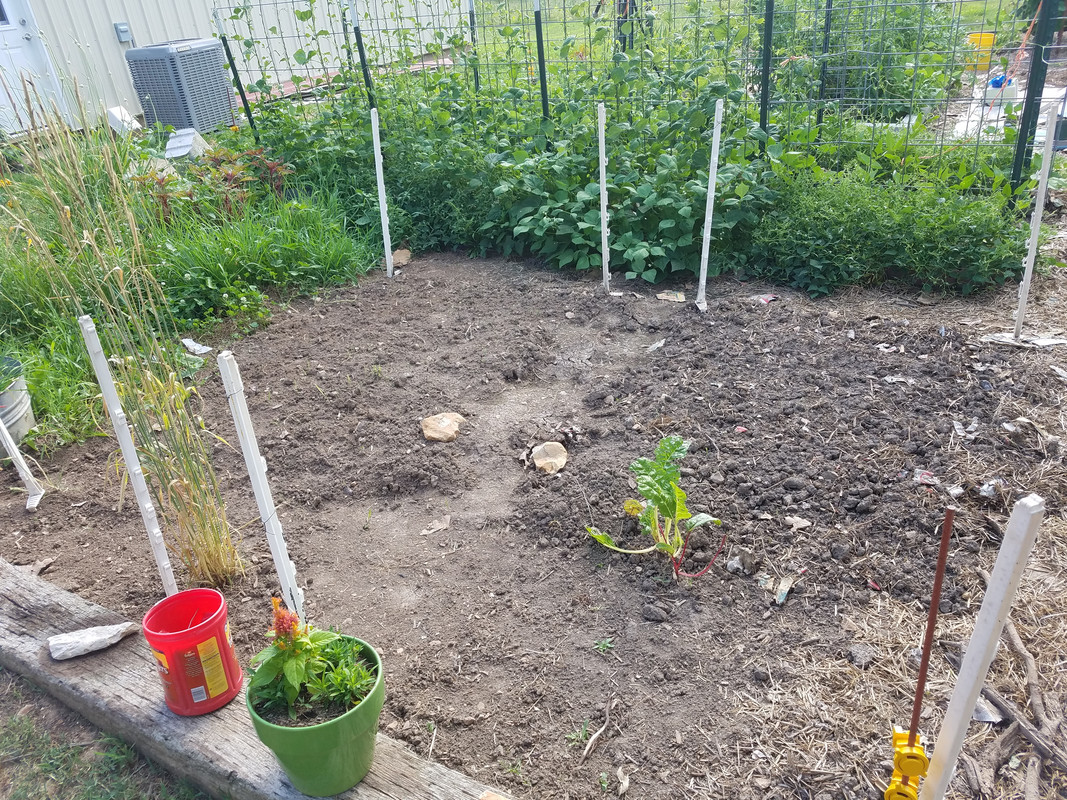 |
|
|
|
Post by Joseph Lofthouse on Jun 21, 2018 2:08:13 GMT -5
I've tried to use radishes and carrots to decompact my soil. I didn't really have much success. I'm giggling. Because last time I planted Daikon radishes, they grew upwards into the air, instead of downwards into the soil. So I was left with radish roots poking up a foot into the air, and barely anchored into the soil. |
|
|
|
Post by reed on Jun 21, 2018 8:39:33 GMT -5
I have great luck with radishes, mine are all mixed up with red and purple ones as big as any Daikons. Sometimes they stick up three or four inches but there can be another foot and a half below the surface. I can't pull them up, if I want one in tact it has to be dug up. The ones that come up in late summer and mature in fall get the biggest. Mostly they are pithy or hollow but surprisingly some of the giant ones are fine to eat.
|
|
|
|
Post by oldmobie on Jun 23, 2018 18:26:42 GMT -5
...and I've never seen potato plants as tall as this years volunteers. (They volunteered in the tomato bed, so they got sheep and goat manure. Hope they're makin spuds, not just tops.) See what I mean?  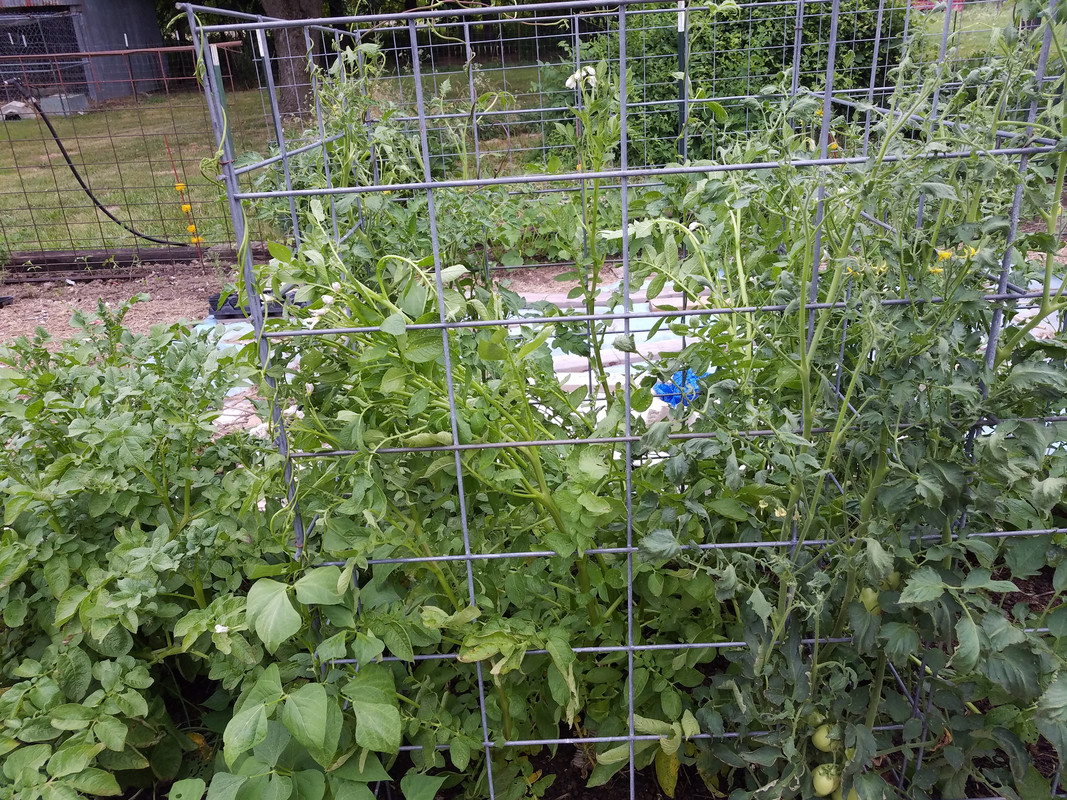 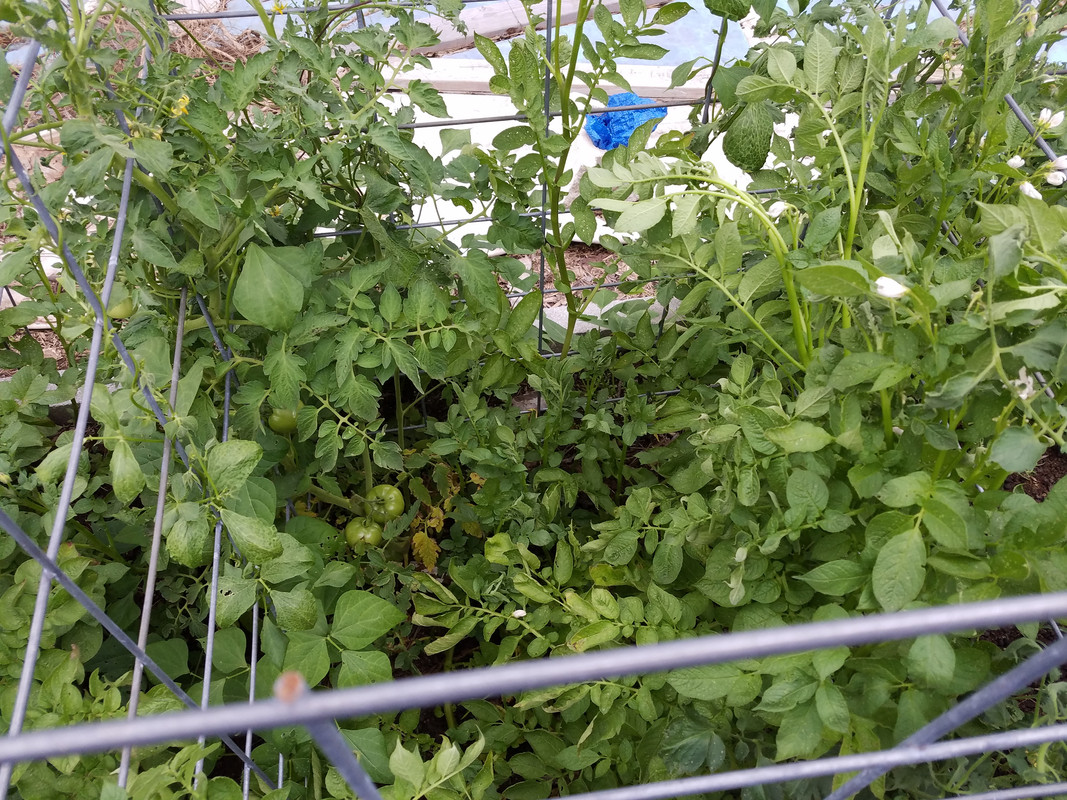 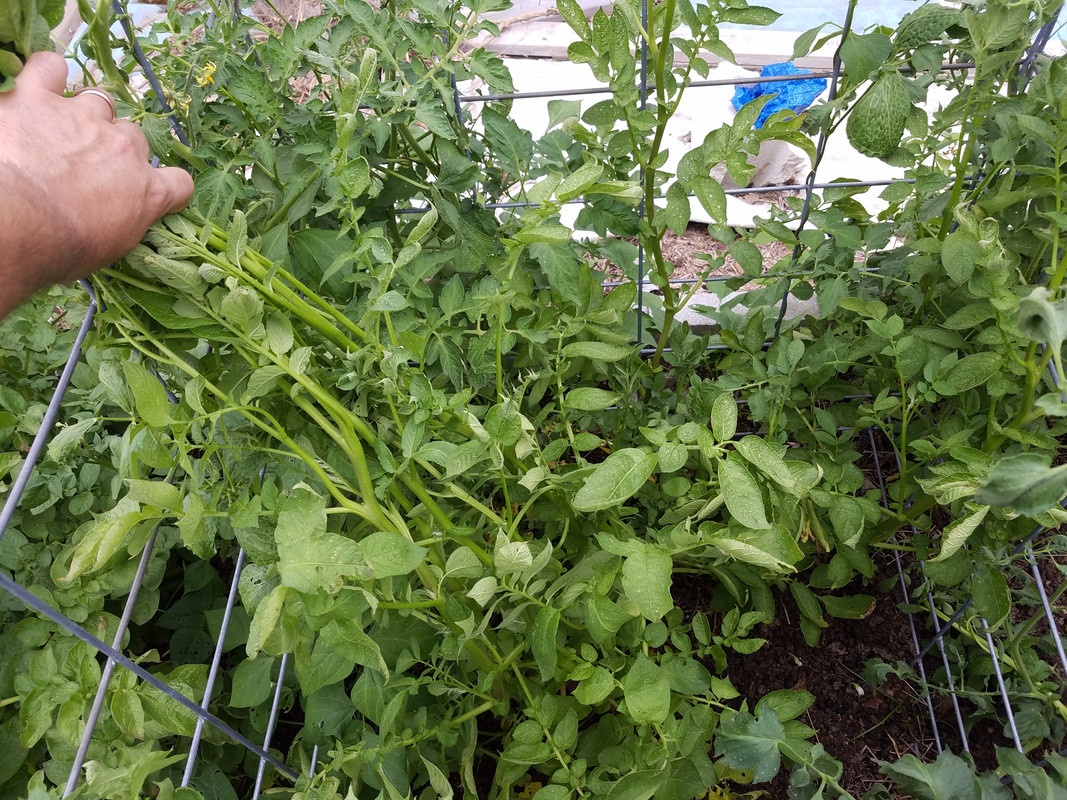 |
|
|
|
Post by oldmobie on Jun 23, 2018 18:39:13 GMT -5
|
|
|
|
Post by oldmobie on Jun 23, 2018 22:20:55 GMT -5
The latter grasses look like Rye to me. The long seeds that stick out are not seeds but ergot. Do not eat the ergot. I'd already eaten one. It didn't taste the same as a ripe wheat, so I concluded it either isn't ripe, or isn't wheat. After your comment, I googled ergot. Then I googled ergotism. I agree: I won't eat that any more. After the enlarged seeds are removed, can the normal seeds be made safe for human or animal consumption? Or should it be destroyed? |
|
|
|
Post by oldmobie on Jun 23, 2018 22:57:45 GMT -5
The problem is in sorting them out carefully. I saw a mention when I googled of float sorting them in a saline solution. I think the ergot infected seeds float, the normal ones sink. I'll look into it for harvest time. Hopefully that will work with plain water, too. I can't imagine salt would be good for seed viability. |
|
Deleted
Deleted Member
Posts: 0
|
Post by Deleted on Jun 24, 2018 4:30:44 GMT -5
For seed saving isn't it possible to sow ergot seeds with the good seeds, or will this lead to higher levels of infection in the subsequent crop? That was my plan atleast and I figure that's probably how they,ve done it as the ages of old. I feel the separation with a salt solution is best done just before going to cook it and maybe only necessary then. I feel the grasses around you are probably the main host for ergot, so as a percentage of ergot from surrounding area you may not be removing much infection. My rye got gotten by some disease but I think that was because of late maturity being it was heavily grazed on by chickens throughout its growth, it was more for chickens in the first place, I think if it ripens like it would naturally I might do ok.
|
|
|
|
Post by oldmobie on Jun 24, 2018 15:58:01 GMT -5
For seed saving isn't it possible to sow ergot seeds with the good seeds, or will this lead to higher levels of infection in the subsequent crop? My google "research" was primarily aimed at answering 1) "What is ergot?", 2) "Why shouldn't it be eaten?" and 3) "Is ergot the most likely diagnosis?". The saline sorting was a rabbit trail I haven't persued yet, but just skimmed over. There was another interesting rabbit trail, too. I just skimmed it, but I think it said ergot fungus can't push through much soil. If I understood, planting the barley at least an inch deep stops it. I don't know if infected seeds die and rot, or if the inch of soil scrubs the ergot off of the growing tip. Just another item I'll want to research before planting. For what it's worth, THIS rye was planted by scratching the soil with a rake or something, hand broadcasting, then smoothing the soil slightly. Some seeds weren't even covered. Most of those were probably taken by birds or rodents. |
|
|
|
Post by reed on Jun 25, 2018 5:54:46 GMT -5
Isn't ergot what LSD is derived from? A little like alcohol from yeast.
|
|
|
|
Post by walt on Jun 25, 2018 11:26:08 GMT -5
I'm pretty sure the ergot seeds won't germinate. My understanding is that the ergot fungus completely replaces the seed. You might google that, or try germinating the ergot seeds. But I believe they won't sprout.
|
|
|
|
Post by oldmobie on Jun 25, 2018 12:16:30 GMT -5
Isn't ergot what LSD is derived from? A little like alcohol from yeast. Saw that mentioned. LSD or a similar molecule. The author knew, but again, I just skimmed. |
|
|
|
Post by steev on Jun 25, 2018 20:35:51 GMT -5
I'm sure I didn't send any rye.
|
|
|
|
Post by oldmobie on Jun 26, 2018 1:41:18 GMT -5
I'm sure I didn't send any rye. Sorry. Old man's memory. They say I'm too young for that, but I never got the memo. At least I don't remember getting the memo... Anyway, I checked my seed stash. As I said earlier, steev sent purple wheat and barley, which I assumed this was, because the ergot is purple. Since ergot seems to prefer rye, ergot is purple, and this grain is tentatively identified as rye, I guess it must be my only rye, Cache Valley Feral rye, from Joseph Lofthouse . When rye was first suggested, I failed to register either that "rye" wasn't what I'd said, or that it wasn't what I got from steev. I may sample a few normal grains to compare to my seed packs. Otherwise, we'll see at harvest. The parts that won't give me convulsions, gangrene, halucinations or death should be edible, regardless of identity. |
|